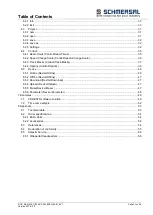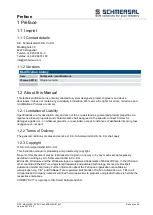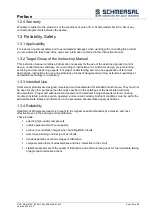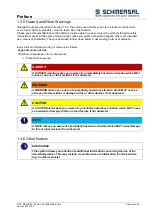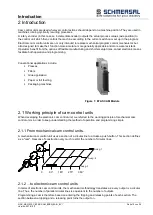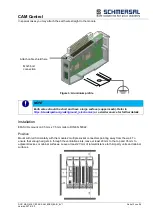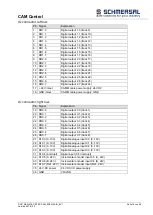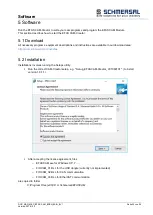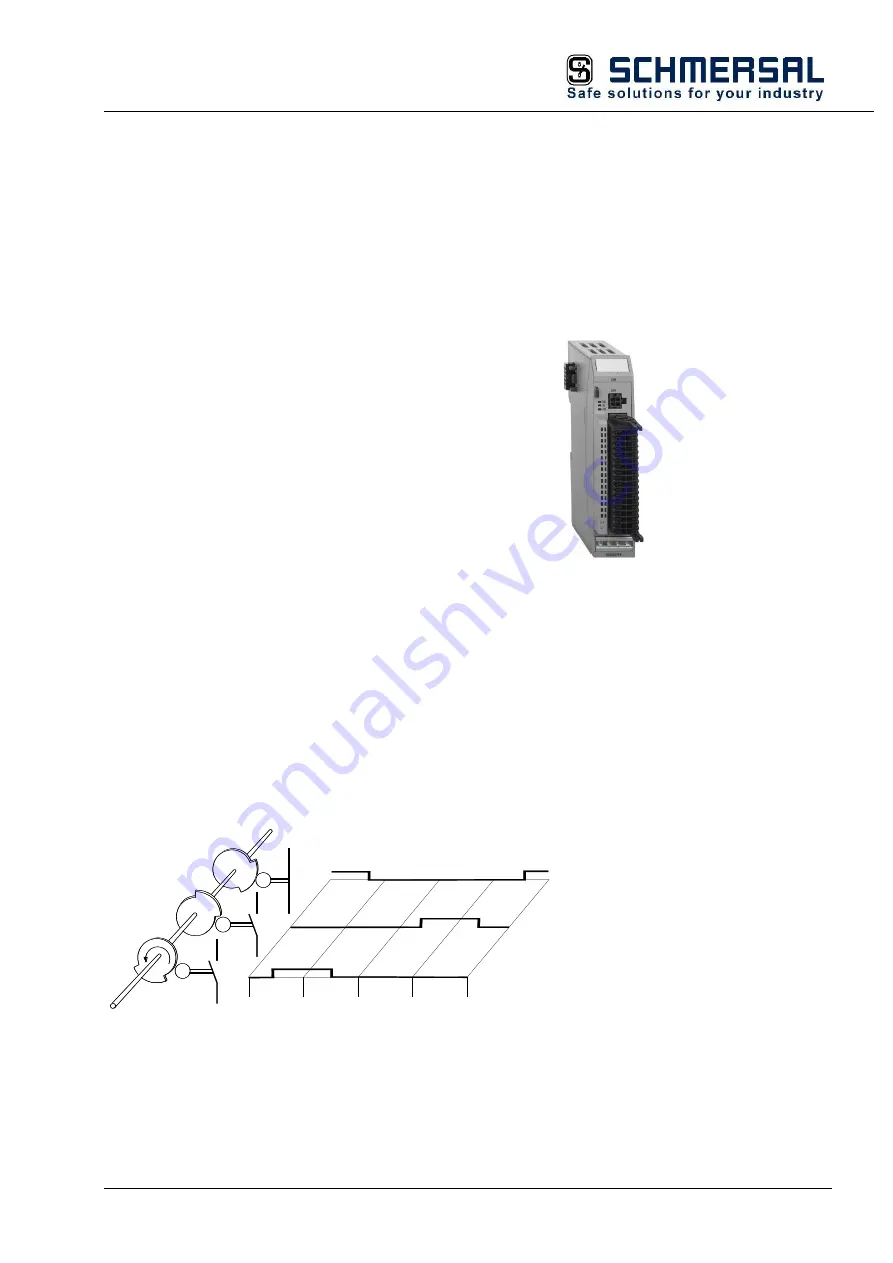
Introduction
DOC_MAN_MEC_EFAS-CAM_#SEN_#AIN_#V1
Seite 10 von 56
Version: 2018 / 02
2
Introduction
Cam control units are used wherever control actions should depend on a machine position. They are used in
machines running cyclically recurring processes.
A rotary encoder (in this case an incremental encoder) outputs the actual process values (axle position) to
the control unit which then controls the machine according to the current switch cam set up in the program.
Electronic cam control units are not only intended to replace mechanical program control mechanisms but
also designed to make their function more accurate, more generally applicable and more wear-resistant.
Operators benefit from the options of flexible manufacturing and shorter setup times. Latest electronic means
facilitate both operation and programming.
Conventional applications include:
Presses
Fillers
Glue application
Paper or foil feeding
Packaging machines
Figure 1: EFAS CAM Module
2.1
Working principle of cam control units
When developing the electronic cam control unit, we referred to the working principle of mechanical cam
control units in order to keep understanding the method of operation and programming simple.
2.1.1
From mechanical cam control units...
A mechanical cam control unit uses a section of a circular line to actuate a push-button. This section defines
as a "cam". Reasons of construction very much restrict the number of circular lines.
2.1.2
...to electronic cam control units
In terms of electronic cam control units, the mechanical methodology translates as: every output is a circular
line. Thus, the number of parallel circular lines is equivalent to the number of outputs.
Programming a cam is therefore based on entering the tripping and releasing points of each section. The
section between a tripping and a releasing point turns the output on.
0
90°
180°
270°
360°
Ausg. 1
Ausg. 2
Ausg. 3



